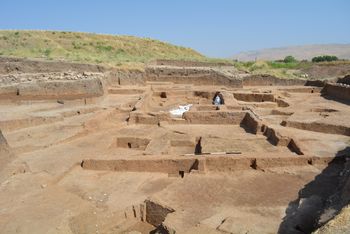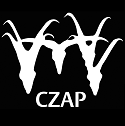The Central Zagros Archaeological Project 2012 to 2017
Central Zagros Archaeological Project, 2022. https://doi.org/10.5284/1090506. How to cite using this DOI
Data copyright © Dr Wendy Matthews, Prof Roger J. Matthews unless otherwise stated
This work is licensed under a Creative Commons Attribution 4.0 International License.
Primary contact
University of Reading
Whiteknights
PO Box 218
Reading
RG6 6AA
England
Resource identifiers
- ADS Collection: 4446
- DOI:https://doi.org/10.5284/1090506
- How to cite using this DOI
Introduction

This collection comprises the archive reports and core data from investigations conducted by the Central Zagros Archaeological Project between 2012 and 2017 in the Kurdistan Region of Iraq. This includes images, reports, site records, spreadsheets and databases. The paper and digital records are stored at the University of Reading, UK. The material archives are stored in the Sulaimaniyah Directorate of Antiquities and the Small Finds, with detailed catalogues, accessioned into the collection of the Slemani Museum, Iraq. These resources can be consulted on request.
The Central Zagros region of west Iran and east Iraq, part of the Fertile Crescent, is of great importance in one of the major episodes of transformation in human history and environment after the end of the Ice Age 12,000 years ago: the change from mobile hunting and gathering to more sedentary agriculture and animal husbandry. The Central Zagros is one of the key areas in which occur naturally the wild plants and animals that were later domesticated.
The aim of the Central Zagros Archaeological Project (CZAP) is to investigate the nature of the Neolithic transition in this key zone during the Early Holocene, by fieldwork and research at sites in the higher and lower Zagros, including Sheikh-e Abad and Jani in Iran, and Zarzi, Bestansur and Shimshara in Iraq. The importance of these sites lies in their very early dates and long occupations, spanning ~9,800-6,000 cal BC, and their location on the most important route-ways through the Zagros mountains, including the later Silk Roads, enabling study of movements of people, animals, materials, practices and ideas during this critical period of change. The sites are part of a cluster of important Neolithic sites in this region, including Asiab, Sarab, Ganj Dareh, and Abdul Hosein in Iran, and Karim Shahir and Jarmo in Iraq. The Central Zagros Project is a joint UK, Iran, Iraq Research Project.
Bestansur
The Neolithic site at Bestansur is located on the fertile Shahrizor Plain in the western foothills of the Central Zagros mountains, in Sulaimaniyah province, Kurdistan Regional Government, Iraq. The site lies close to a perennial spring and comprises extensive Early Neolithic occupation and later Neo-Assyrian and Sasanian and later levels, which form much of the 7.5m high central mound. Excavations have been conducted at Bestansur since 2012 to investigate the nature and extent of the Early Neolithic occupation and their economy and society.
Shimshara
Shimshara is located on the north-eastern edge of the Rania Plain, close to the Lesser Zab river. Danish and Iraqi excavations in the 1950-60s revealed extensive settlement of Bronze Age and Neolithic date. Following construction of the Dokan Dam in 1957 the site periodically submerged below the waters of the new lake. In recent years very low water levels mean that the site is now above water for much of the year, thus enabling renewed archaeological investigation. The aim of our work at Shimshara is to record and excavate as much as possible of the Neolithic levels before they are completely eroded by repeated flooding. The CZAP team undertook section cleaning and interdisciplinary sampling in summer 2012, in order to investigate Neolithic ecology, society and activity at the site. This initial phase of rescue work on the eastern edge of the mound revealed an Early Neolithic terrace cut into a natural spur, which represents the earliest evidence for occupation at Shimshara.
Zarzi
The CZAP team conducted a short season of intensive field survey in the region of the Epipalaeolithic Zarzi cave in January 2013. The survey included systematic, intensive field-walking in transects in order to search for archaeological sites. The emphasis of the survey was on early prehistoric sites with the particular aim to identify sites of Late Pleistocene and Early Holocene date that would be approximately contemporary with the project's research focus on the transition from hunter-forager to farmer-herder in the Early Neolithic period, ca. 10,000-7000 BC.
The CZAP Database
The archived version of the CZAP database was developed in Microsoft Access 2016. This includes linked data tables detailing the sites, trenches, spaces, buildings, walls, features, contexts, samples, bulk finds, small finds and related conservation interventions, as well as records of plan and section drawings.
The CZAP Digital Archive
Scans of paper records for contexts, samples and small finds are included in this archive. A substantial archive of documentation including scanned and digitised plan and section drawings and digital photographs is stored at the University of Reading. These resources can be consulted on request.
The CZAP Reports
Archive reports for each field season are included in this archive. The results of the CZAP investigations between 2012 and 2017 have been published in:
Matthews, R., Matthews, W., Rasheed Raheem, K. and Richardson, A. (eds). 2020. The Early Neolithic of the Eastern Fertile Crescent: Excavations at Bestansur and Shimshara, Iraqi Kurdistan. CZAP Reports Volume 2. Oxford: Oxbow Books.
This volume is Open Access (and included in this archive), also available at: https://doi.org/10.5281/zenodo.4279388
Previous CZAP investigations at Sheikh-e Abad and Jani in Iran are published in:
Matthews, R., Matthews, W. and Mohammadifar, Y. (eds). 2013. The Earliest Neolithic of Iran: 2008 Excavations at Sheikh-e Abad and Jani. CZAP Reports Volume 1. Oxford: Oxbow Books and BIPS.










